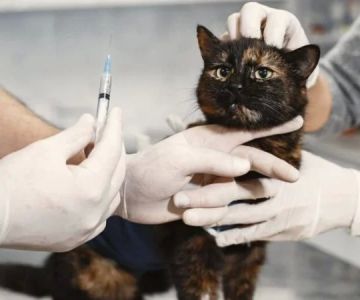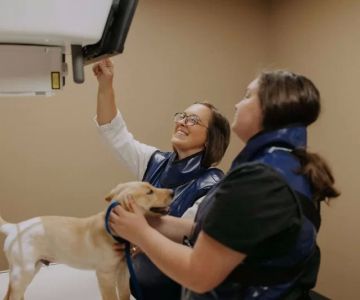How to Read PCV Veterinary: A Comprehensive Guide for Pet Owners
- 1. Understanding PCV and Its Importance in Veterinary Medicine
- 2. The Process of Measuring PCV in Animals
- 3. Interpreting PCV Results: What Do They Mean for Your Pet?
- 4. Common Conditions Indicated by PCV Results
- 5. How to Use PCV Results in Your Pet's Health Monitoring
1. Understanding PCV and Its Importance in Veterinary Medicine
When you take your pet to the vet, there are a number of tests that could be conducted to assess your pet's overall health. One of the most common tests is the Packed Cell Volume (PCV), which measures the percentage of red blood cells in a sample of blood. PCV is a crucial test for diagnosing anemia and dehydration in pets, and it’s one that pet owners should understand well.
In veterinary medicine, PCV helps veterinarians assess how well your pet's blood is circulating oxygen and to check for signs of underlying health issues. I remember when my dog, Max, went in for a routine check-up and the vet performed a PCV test. At first, I didn’t realize the significance, but after learning more about it, I understood that it’s a vital part of the overall diagnostic process.
PCV results are typically expressed as a percentage, and a normal range will vary slightly depending on the species. For dogs, normal PCV is usually between 37% and 55%, while for cats it’s generally between 30% and 45%. These values can give veterinarians important clues about your pet’s health.
2. The Process of Measuring PCV in Animals
The process of measuring PCV is relatively straightforward and non-invasive. A veterinarian or veterinary technician will typically draw a small blood sample from your pet, usually from a vein in their leg or neck. This sample is then placed into a small tube, which is spun in a centrifuge. The centrifuge causes the blood to separate into layers, with the red blood cells settling at the bottom.
The PCV is calculated by measuring the proportion of red blood cells in relation to the total blood volume. This simple process can provide a wealth of information about your pet’s health. During Max's check-up, I watched the vet perform this test, and it was fascinating to see how such a small sample of blood could provide such important insights into his overall well-being.
Once the PCV is measured, the result can be used alongside other tests, such as a complete blood count (CBC), to determine if there are any abnormalities. This is why regular check-ups are so important; even subtle changes in PCV can signal the presence of an issue before other symptoms become noticeable.
3. Interpreting PCV Results: What Do They Mean for Your Pet?
Interpreting PCV results is crucial for understanding your pet’s health. A low PCV (under the normal range) can indicate a variety of health problems, including anemia or significant blood loss. On the other hand, a high PCV could suggest dehydration, a condition in which your pet’s blood volume is reduced due to insufficient fluid intake or excessive fluid loss.
When I learned about Max’s PCV levels, the vet explained that a lower-than-normal PCV could be a sign of anemia, which could be caused by several things, from parasites to chronic diseases like kidney failure. In Max’s case, his PCV was a bit on the low side, and we ended up running additional tests to rule out any serious conditions.
It’s important to note that PCV results must be considered in context with other health indicators and clinical signs. For example, a low PCV can also be accompanied by symptoms like lethargy, weakness, and pale gums, which can help the vet narrow down the cause of the problem. The vet may also recommend follow-up testing to get a clearer picture of your pet’s health.
4. Common Conditions Indicated by PCV Results
Several conditions can be detected or suggested through abnormal PCV results. Here are some of the most common ones I’ve learned about:
4.1 Anemia
When a pet’s PCV is low, it could be a sign of anemia, which means there aren’t enough red blood cells to carry oxygen throughout the body. Anemia can be caused by a variety of factors, including blood loss from injury, parasites like ticks and fleas, or chronic conditions like kidney disease.
4.2 Dehydration
A high PCV can indicate dehydration, as there’s less fluid in the blood, making the red blood cells more concentrated. Dehydration can happen quickly in pets, especially if they’re vomiting, have diarrhea, or aren’t drinking enough water.
4.3 Chronic Illnesses
PCV can also give insights into chronic health issues such as heart disease or kidney failure. For example, kidney disease can cause anemia, which can lead to a low PCV. Similarly, conditions that affect red blood cell production can also result in abnormal PCV levels.
5. How to Use PCV Results in Your Pet's Health Monitoring
Now that I understand how to read PCV results, I use this information to monitor Max’s health more closely. If your vet provides you with a PCV result, it’s important to keep track of changes over time. A single abnormal PCV result might not necessarily mean there’s a major problem, but consistent changes could signal an issue that needs attention.
For example, if your pet’s PCV continues to drop over several visits, this could indicate a chronic condition, and your vet might recommend further testing or changes in treatment. Likewise, if you notice signs like fatigue or pale gums alongside a high PCV, your vet may want to address dehydration and recommend rehydration strategies.
Having a thorough understanding of PCV readings gives you the knowledge to ask the right questions and make informed decisions about your pet’s care. If you’re ever in doubt about your pet’s health, don’t hesitate to discuss PCV results with your veterinarian, who can explain the findings in more detail.











